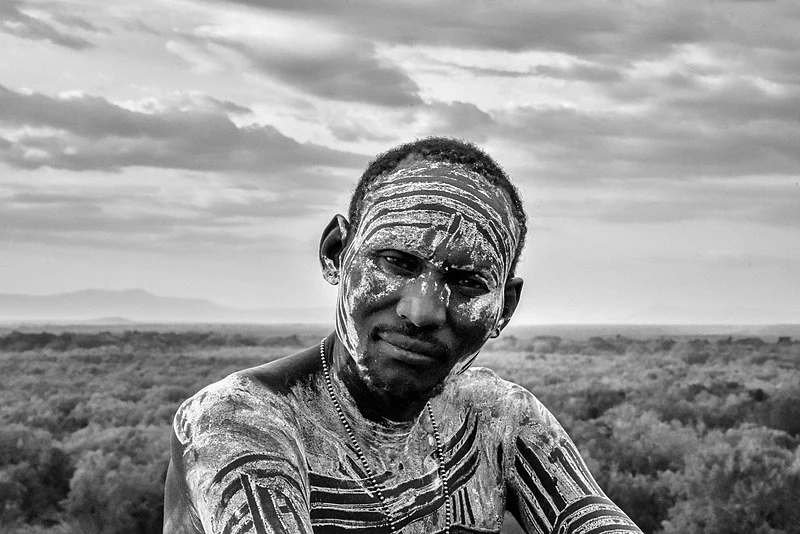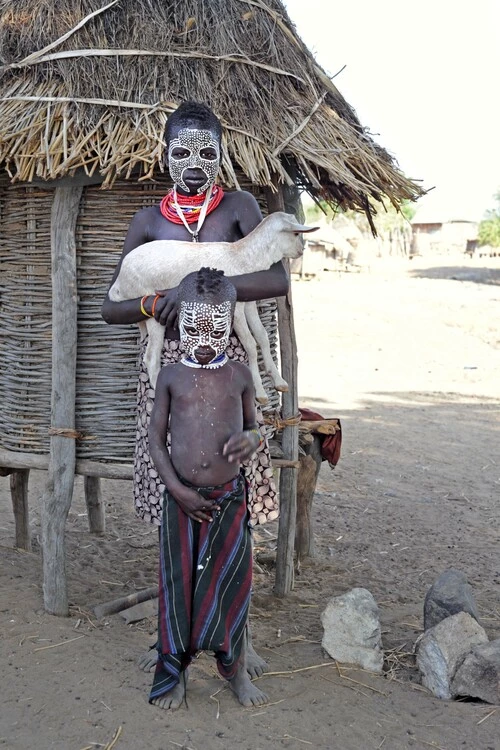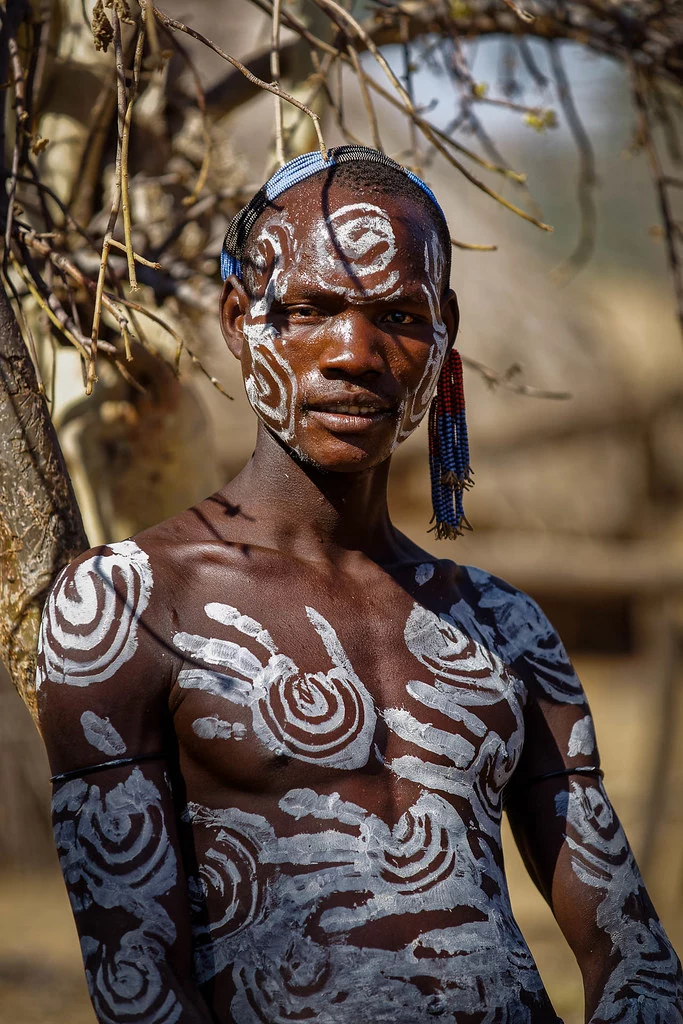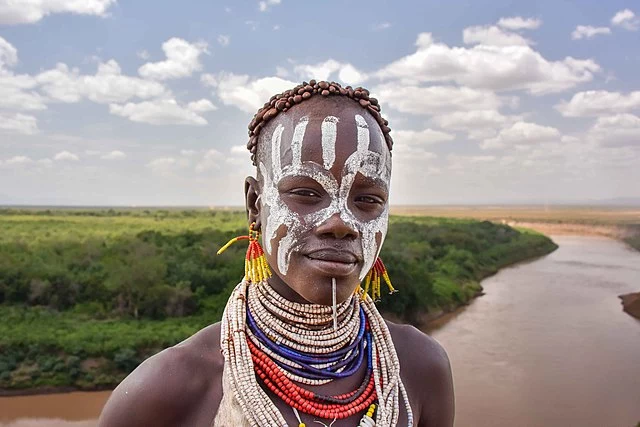Various people in Africa come from different tribes. Mostly in rural areas, you will find that people belonging to the same tribe often settle together. However, this is not so much represented in the urban areas. One such tribe found in Africa is Karo.

The Karo people are a Nilotic group which is found in certain regions of South Sudan, Uganda and the Democratic Republic of the Congo. The sub-tribes of Karo are Yangwara, Bari, Pojulu, Kuku, Mundari and Kakwa.
Where Do The Karo People Live?
The Karo people occupy the southern parts of Ethiopia around the Omo River.
In total, the Koru people range from 1000 to 3000. Due to this small number, the Koru people became the tribe with the least membership. The area occupied by the Koru is often infested with tsetse flies which poses a major challenge to the Koru as it affected their animals. For this reason, they have resulted in keeping only small animals like sheep, goats and a small number of cattle.

The problem of tsetse flies has discouraged the people from doing pastoralism since their livestock will be affected. They have turned to fish and crop cultivation as their sources of livelihood. Since the area around the Omo valley is occasioned by flooding, it offers a favorable opportunity for the Koru to plant sorghum and maize. Other food crops cultivated are beans and pumpkins. Of all these the Koru majorly deal with sorghum as their major food crop.
Where Are The Karo People From?
The Karo trace their origin from South Sudan in a region called Central Equatoria State to Uganda in the Southern parts and the Democratic Republic of Congo in the southwestern regions.
Initially, the Koru people lived together with the Hamer people as one community. However, later there emerged issues of inadequate land and pasture which made them go separate ways in search of land and pasture. It was at this time that the Koru moved to the area of Omo valley while the Hamer moved to the hills.
Since the Koru earlier on lived with the Hamer there are some aspects of their culture which are similar to date. The communities acquired their names depending on the areas they settled. The name Hamer means ‘mountain dwellers’ while Koru means ‘fish’. Earlier the Koru were major traders and they occupied a trading network that ran across Kenya and South Sudan. However, due to the tsetse flies in the region, their livestock died which made them pull out.
What Do The Karo People Eat?
In crop cultivation the Karo plant sorghum, beans, corn and pumpkins. Of all these their major food crop is sorghum.
The type of crop cultivation practiced by the Karo is the flood retreat method. The area around Omo valley normally floods when it rains. When the water level has gone down, the Karo then put sticks in the mud and then plant the sorghum and maize.
Sorghum, as their main source of food, has various uses. First and foremost they use sorghum in the preparation of porridge where they incorporate the use of either milk or even water at other times. The sorghum is also used in making local beer where it is fermented. The beer is mainly prepared during ceremonies.
While it is common to eat meat from goats and sheep, cattle are slaughtered only on very important occasions. This is because they are few. These ceremonies are those which involve circumcision. Do not be surprised to see the Koru drinking blood as it is one of their foods.
What Are The Karo People Known For?
Every tribe or community has those aspects of its culture which are very unique to it. Some of the practices may appear to be strange to other people but they are cherished by the community practicing them.
The Karo people are famous for painting their bodies and also for their mode of dressing.
What Is Important To The Karo People?
Beauty is cherished by both men and women in the Karo community. The women create scars on their chests or even stomachs as they think it makes them more attractive. Any woman who is seen to have the decoration of scars is termed to be a grown-up by the community. The creation of the scars is done using a razor or even a blade. So that the scar can last for long and be permanent on the body, ash is rubbed on it.

On the other hand, men also have scars on their bodies. However, they do not necessarily make them look more attractive but the scars display their courageous nature. Often the Karo men went out for battle and were able to kill their opponents or even some dangerous animals. Whenever a man did a killing he would create a scar on his chest so that he can be recognised by society. One scar represented a single killing. A man who had a scar on his chest was greatly respected by the community. In addition, the man was to apply gray or red ochre and ostrich feathers fixed on the bun in the hair.
Why do they Paint Themselves?

By painting themselves, it serves as a way of distinguishing themselves from the rest of the neighboring communities. The Koru paint their bodies using materials like coloured ochre, white chalk and yellow mineralized ore. The drawings on their bodies represent various messages from stars to even animals. Due to this the drawings vary from time to time.
The men wear beads around their necks to show the killings they have made. In addition, the men apply ashes combined with fat to their faces and body which tends to display their masculinity. This is normally during ceremonies and other rituals which come after a bumper harvest. The ashes blended with fat on their bodies is also a symbol of the braveness of the man and it also shows their beauty. Therefore, such a man is able to attract other women.
